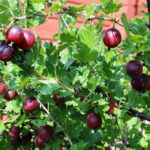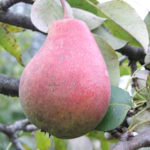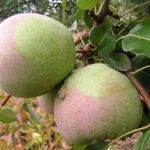Rose of Utopia (Utopia)
There are varieties of roses that seem to be aliens from other worlds. The variety with the fantastic name Utopia fits this definition perfectly. The unique coloring of its lovely buds makes the appearance of the noble plant fabulous and truly unearthly. Get to know this culture and it will steal your heart forever.

History and description of the variety
Rose Utopia appeared thanks to the works of the Canadian breeder Brad Jalbert. The variety was bred by the aforementioned scientist in 2009 by crossing two varieties of the flower queen: New Zealand and Rosemary Harkness. An alternative name for the tea hybrid is Jaltopia.
The result of the selection work of the North American specialist turned out to be simply stunning, and this concerns, mainly, the amazing color of the flowers of the newly-made decorative perennial. It is a harmonious and at the same time exciting mix of various shades: peach, creamy apricot, pink, coral, orange, purple and lemon. It is interesting that the listed colors flow into one another, mix and flow over each other, like waves. The edging of the petals is bright, red-crimson. The flowers of the Canadian variety themselves are densely doubled, large (up to 12 cm in diameter), consist of a large number of petals (each has 45 - 50 pieces). As buds, they have the classic shape of a glass, and reach a height of 9 cm. On one stem, from 1 to 3 lovely flowers are formed, which, by the way, also smell wonderful. Their strong, but at the same time delicate aroma contains fresh fruity, mainly peach notes.
An overseas beauty can grow up to 1.2 m in height, but on average its dimensions are in the range from 90 to 100 cm. It forms a branchy bush with emerald-green, glossy leaves covered with emerald green, glossy shining especially strongly under the sun's rays. Flowering culture begins in the month of May and lasts until the end of the summer season. It is quite abundant, and the flowers on the bush last up to 18 days, all this time keeping their original shape.
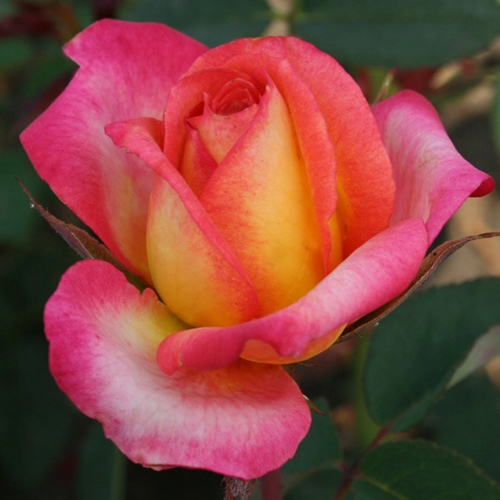
A tea hybrid with a magic name is highly resistant to most diseases and winter cold (not afraid of frosts down to minus 28 ºС). Its flowers are slightly damaged by rain, but fade in the sun. With prolonged precipitation, the buds do not rot and do not lose their shape, and also do not droop from their own weight, being saturated with moisture.
Features of agricultural technology
Given the negative reaction of the petals to the abundance of sunlight, it is better not to place the rose in open places where it will be exposed to direct sunlight during the day. Choose for a romantic beauty a sector of the site dominated by openwork penumbra - this way you will preserve the incredible color of the lovely flowers of the variety. In addition, it is recommended to plant shrubs on a hill or flat area. The lowland for Utopia is not suitable because of the real threat of decay of the perennial root system as a result of stagnant moisture after heavy rains.
The soil of an ornamental plant needs fertile, loose, light, with a slightly acidic reaction. The poorer in nutrients the soil under the bush, the worse its development and, accordingly, poor flowering. You can use garden or garden soil for planting a culture, but in this case it should be mixed with peat, humus and compost, and for better air and water permeability, add sand. Be sure to lay a thick layer of drainage material, such as gravel, at the bottom of the spacious hole.
Utopia needs moderate watering, once a week. However, in dry summers, it is necessary to moisten the soil under the flower more often and more abundantly. Drying out of the soil should not be allowed at all.
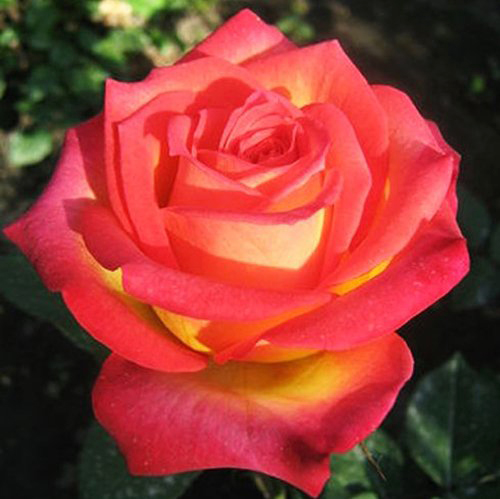
Top dressing of roses begins in spring, when the culture is just entering a period of active growth. At this time, organic matter is used to fertilize the soil under the bush.At the time of the appearance of buds on a perennial, the emphasis is placed on the introduction of mineral complexes, at the end of summer - phosphorus-potassium concentrate.
Do not forget about loosening and mulching the soil around the rose bush. The importance of the first procedure is due to the need to maintain a high level of air oxygen access to the plant roots. Mulching will reduce the risk of weeds appearing in the zone of the near-trunk circle.
The tea hybrid is pruned in spring and autumn. Dry, too thin and damaged shoots are subject to removal. Autumn pruning is required to prepare the plant for wintering, and therefore affects all branches of the culture, without exception.
It is imperative to cover the rosette, despite the excellent winter hardiness. Both spruce spruce branches and non-woven material such as spunbond and lutrasil can cope with the role of insulation. But first, you should spud the plant with dry soil or peat.
Inspect the shrubbery frequently for the presence of pests. A noble culture is simply adored by the ubiquitous aphid. The best option is to carry out preventive treatment of the plant with an insecticidal preparation, without waiting for the attack of insects.
From diseases, the variety can be damaged by rust. So it does not hurt to periodically spray the shoots of the culture with a fungicide to reduce the risk of this trouble.
Use cases
Rose Utopia looks very attractive in group plantings, but it can also act as a tapeworm. To emphasize this shrub, plant it in the foreground of the site, near the front of the dwelling or at the front entrance to the house. The culture is suitable for decorating hedges, growing in rabat and mixborders. This beauty must be settled in a rose garden, if you have one - there she will become one of the pearls of your collection of roses. The flowers of the variety are ideal for cutting, as they can stand in a vase, without losing their shape and decorativeness, for up to two weeks.

